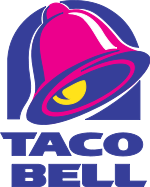Taco Bell is one of the largest and most recognized fast food chains in the world, serving Mexican inspired fare all over the United States and in several other countries. Based out of California with its sister brands Pizza Hut and KFC, Taco Bell serves more than 2 billion customers every year.
Taco Bell’s brand rhetoric is increasingly responsible for the direction and sales of the company. Since its inception in 1946, Taco Bell has undergone several shifts in tone and target demographic. Today, Taco Bell focuses sharply on a teenage and college-age demographic with logically appealing advertising and emotionally relatable messages.
Ethos (Authority)
Taco Bell’s authoritative appeal is relatively minimal. Since its primary demographic (teenagers) cares little for the ethical value or experience of the company, Taco Bell enjoys the luxury of not needing to emphasize its capabilities in its marketing messages. However, Taco Bell’s arrogant-yet-friendly voice does wonders for establishing itself as a major player in the fast food world.
Pathos (Emotion)
Most of Taco Bell’s brand rhetoric power comes from its appeal to the emotions. Its humorous, conversational style has a broad appeal, especially for youngsters (its key audience). By creating a personable and enjoyable brand voice through its advertising rhetoric, Taco Bell establishes itself as the brand of choice for young adults who have a strong distaste for stuffy or boring language.
Logos (Logic)
Taco Bell’s logic largely comes from its subtle appeal to individuals with little money and an appetite late at night. Often pushing language that emphasizes Taco Bell’s cheap products and open-late Drive-Thrus, the fast food chain offers a strong logical appeal to its primarily young demographic. Since Taco Bell rarely calls out competitors by name, its focus on presenting a subtle yet logical case is surprising.
The power of Taco Bell’s brand rhetoric is its precision focus on its key audience. Its focus on cheap food logic and an edgy emotional appeal is somewhat risky, possibly alienating a very old or very young audience, but also offers a much higher return in the young adult market. Through this strategy, Taco Bell has reached a unique status in the United States as the fast food brand of choice for teenagers and 20-somethings.



